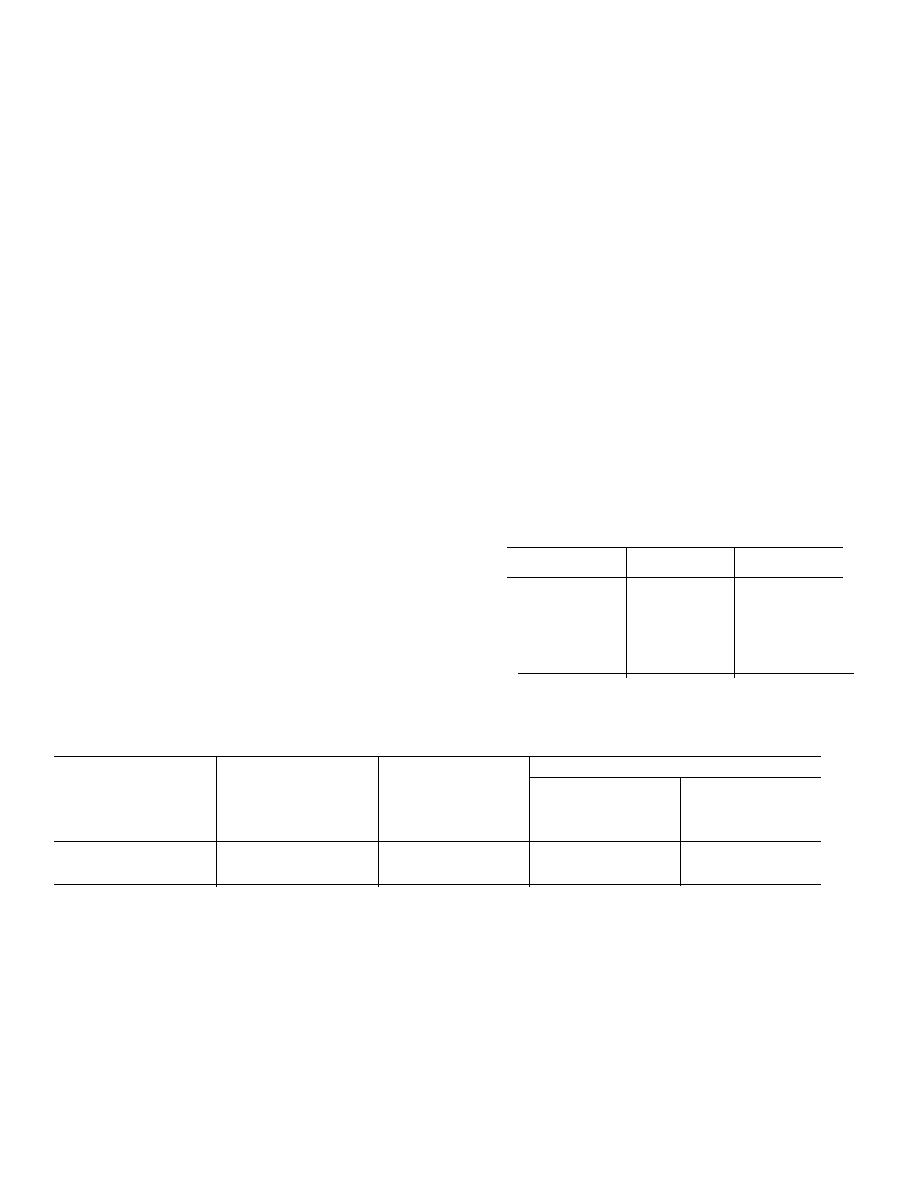
TM 5-3810-295-34
groove with a succession of stringer beads. In the event
tant that these rods be baked before use.
that a vertical weld is required, it is permissible to weave,
(2) If the electrode can was not air tight, or if the package
but be sure to restrict the weave to a minimum of two
was a cardboard "moisture-proof" box, place the
electrode diameters. Before another bead can be laid
electrodes in a baking oven.
Check to see if
over an earlier bead, flux, scale, or oxidation must be
temperature and baking time is on shipping label; if not,
removed from the earlier bead. To prevent porosity at
one hour at 800F is average but, baking at 800F
points where you strike the arc with low hydrogen
should never exceed one hour and 15 minutes. Be sure
electrodes, strike the arc about one inch from the end of
the oven is vented for air circulation. After baking, the
the previous weld increment and back-step into the crate
electrodes should be placed, while still warm, in a
rather than drag the arc down over the crater as you do
holding oven at 250/3000F.
with other electrodes. This procedure will help to insure
(3) Never take more than a half-hour's supply of
that your weld will pass X-ray test standards. The
electrodes from the holding oven. If electrodes are out of
preferred method of back-gouging is arc-air gouging,
the holding oven longer than one-half hour, repeat step
followed by clean-up grinding. The use of proper air
2.
pressure and current generally minimizes carbon
(4) Table 2-2 should be used to establish proper current-
deposits. However, if back gouging is done improperly,
voltage settings.
troublesome carbon deposits may be left in the joint.
c. Heat. The production of acceptable quality welds in
Grinding to one-sixteenth of an inch below the exposed
"T-1" steel depends on never exceeding the required
surface will normally remove the carbon deposits.
maximum heat. Use less heat than is required for
CAUTION
ordinary steels, so that the weld area will cool down
Do not use an oxyacetylene torch to remove
rather quickly. As long as "T-1" steel can cool rapidly it
carbon deposits. There is danger of
will develop good, tough welds. The only one practical
overheating,
which
may
cause
an
way to control the time required for cooling is to control
unsatisfactory joint.
the amount of heat put into the weld. Table 2-3 provides
the recommended preheat and interpass temperatures
Table 2-2. Current-Voltage Settings
for the thickness of upper turret flange steel provided on
this machine.
Electrode
Current
Voltage
d. Welding Procedures. The straightforward stringer
size -
(amperes)
bead method is preferred for welding "T-1" steel. Do not
use the" full weave" method, except as described below.
1/8x14
140
22
Normally, the proper method is to fill the
3/32X14
200
22
3/16X14
250
24
7/2X18
300
24
Table 2-3. Suggested Minimum (I) And Maximum Preheat Temperatures For "T-1" Steel
-----
Submerged arc process
-----
Inert-gas
Alloy wire
Carbon steel
Plate thickness
Manual metal
metal-arc
neutral
wire alloy
(inches)
arc process
process (2)
flux (3)
flux (4)
Between 1 and 2"
150
150
200
300
shown may be required for highly restrained welds.
(4) Example: Lincoln L61 wire and A0905 X 10
However, preheat or interpass temperature should never
exceed 400F for steels through Ilk inch, and 450F
2-10. Engine and Reduction Gear Assembly
above Ilk inch.
a. General. The engine and reduction gear
(2) Example: Airco A-632 wire and argon with 1 percent
assembly (fig. 2-2), are difficult to separate or
oxygen
remove from the crane except as a single unit. In
(3) Example: Linde Oxweld 100 wire and 709-5 flux
addition, the unit also includes the radiator, and
starting aid.
2-18

